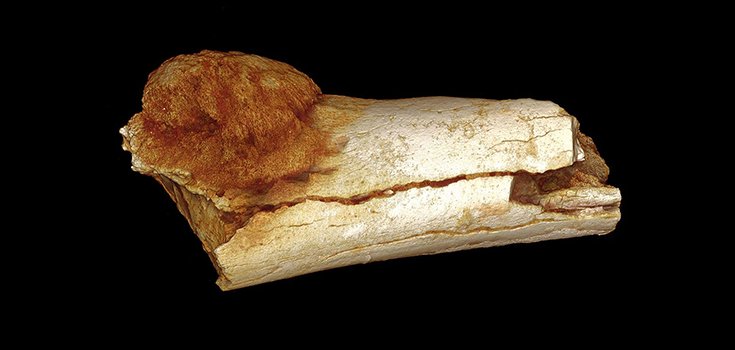Evidence of Human Cancer 1.7 Million Years Ago Discovered

Some people may say that cancer is a result of our modern lifestyle and poor eating habits, but a new discovery challenges that notion.
Scientists have recently discovered a fossilized human foot with osteosarcoma, an aggressive form of bone cancer. The foot bone dates back to 1.7 million years and was discovered about 20 miles outside of Johannesburg. And although scientists aren’t sure what species of human the bone comes from, they are positive it does belong to a human.
Likewise, they are unsure if the foot belonged to a child or adult or if the osteosarcoma is what eventually led to the person’s demise. However, they are sure that it would have greatly impeded his or her ability to walk. [1]
A South African team with some of the same members also recently investigated a benign tumor on a child’s vertebrae. This 2 million-year-old fossil tumor belonged to a member of the hominin species Australopithecus sediba. Previously, the oldest recorded tumor was found in that of a Neanderthal which dated back to 120,000 years. These two discoveries make quite a leap in research. [2]
Edward Odes of the University of Witwatersrand, who worked on both tumors, said:
“Modern medicine tends to assume that cancers and tumours in humans are diseases caused by modern lifestyles and environments. Our studies show the origins of these diseases occurred in our ancient relatives millions of years before modern industrial societies existed.”
Hannah Birkett, of the Bone Cancer Research Trust in the UK, said:
“This discovery is really exciting for osteosarcoma and the field of primary bone cancer research as a whole. It further solidifies what we already know about the pathology of osteosarcoma and its development from the cells which are working to produce bone.
Modern lifestyles and environmental factors loom large in people’s perceptions of the cause of cancer, and this finding reconfirms the importance of considering other factors such as bone growth. This discovery will hopefully open new doors into investigating the cause of osteosarcoma further.”
Both bones underwent analysis in a brand-new X-ray imaging machine that helped the researchers come to their conclusions.
Sources:
[1] The Independent
[2] New Scientist
